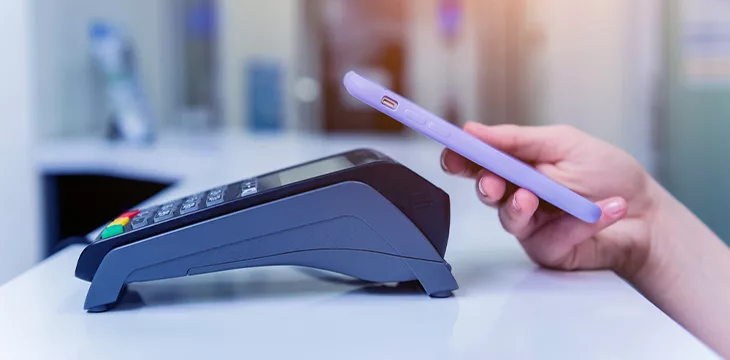|
Getting your Trinity Audio player ready...
|
Nearly two months after the ousting of the former governor, the Central Bank of Nigeria (CBN) has shown no signs of abandoning its central bank digital currency (CBDC).
The central bank had upgraded the CBDC mobile app with Near Field Communication (NFC) technology, local news outlet The Sun reported. NFC technology allows mobile devices and payment terminals to interact within range, enabling contactless eNaira payments.
Although earlier iterations included QR codes, the CBN says the new feature will be key in improving adoption rates for the CBDC. Joseph Angaye, deputy director of the CBN’s risk management department, disclosed that the banking regulator will continue to leverage innovative technology to improve user experience.
“The world is going digital and the CBN cannot afford to lag behind,” Angaye said. “So, when there’s a new technology, we embrace it.”
In the spirit of leveraging new technology, Angaye added that the CBDC will be integrated with programmability features. According to Angaye, the programmability feature may be used to restrict CBDC payments to specific government programs to reduce the occurrence of fraud.
“If we want to get funds across to farmers to acquire tools or for any other specific thing, we program it. They cannot divert the money transferred into their eNaira wallet to some other things,” Angaye remarked.
The deputy director noted that CBDCs offer several benefits to retail users in the country, including eliminating settlement risks and fast transaction times. Angaye pointed out that the eNaira attempts to solve the challenge of financial inclusion, noting that Nigeria’s pioneering status with CBDCs allows “many economic players and bodies to learn from our experience.”
Nigeria launched its eNaira in 2021 to be part of an exclusive group of countries with a CBDC offering. However, adoption rates have fallen below expectations, prompting the central bank to explore several options to drive usage.
The central bank rolled out use cases in the transport sectors while including USSD functionality in the offering. With adoption rates still low, former CBN Governor Godwin Emefiele blamed commercial banks for stifling eNaira’s growth in favor of their profitability.
Testing the waters with cross-border transactions
Since Emefiele’s exit from the CBN, the banking regulator has continued the expansion of the CBDC use cases. In June, the central bank approved the eNaira to be used for foreign remittances by international money transfer operators (IMTOs).
While solving the challenge of low CBDC adoption rates, the new move by the CBN was hailed as providing a solution to the issue of dollar shortage plaguing the nations. The CBN notes that using the eNaira for remittance is “optional” and will exist alongside traditional dollar payments, with IMTOs expected to apply for a one-time license to use the service.
To learn more about central bank digital currencies and some of the design decisions that need to be considered when creating and launching it, read nChain’s CBDC playbook.
CoinGeek Conversations with Catherine Lephoto: How blockchain is transforming health and education in Africa

 01-02-2026
01-02-2026 




